Tool description
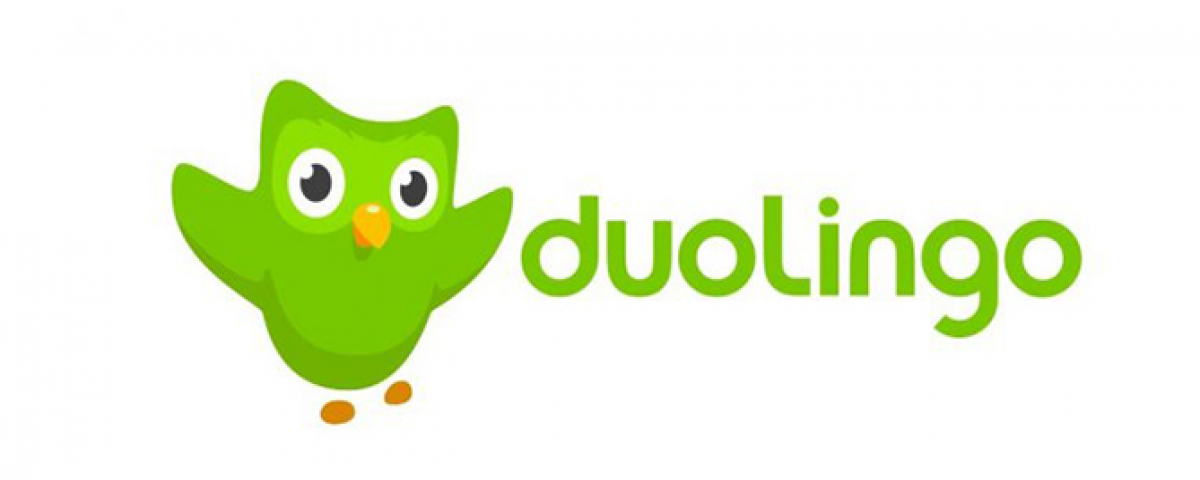
- Category: Mobile App
- LANGUAGES: mul Multiple languages
Summary
I like...
✅ Short interactive courses
✅ A playful mode of operation
✅ Different features (user clubs, contests between friends, gems ...)
✅ A daily practice of a target language,
✅ Pleasant visuals.
✅ You can learn multiple languages simultaneously
I don’t like...
❌ It is only for beginners and not meant for Advanced learners
❌ The software does not offer explanations of the lessons (in the form of series of exercises)
❌ Some sentences may be mistranslated
❌ Paid additional features.
❌ The application requires an internet connection. So you can't use it everywhere.
❌ You can only learn some vocabulary and phrases
Detailed description
The Duolingo business model
Designed by engineer
Languages Duolingo
If you know someone looking to learn English,
Price of Duolingo
How does Duolingo work?
Whatever the language,
Customization according to your objectives and your level
Before you start learning the language of your choice on

You will be offered different choices of answers depending on the language in order to adapt the content. You then choose the time you will devote to it each day (from 5 minutes), and whether you are a beginner or not. In the latter case, a test is proposed. It's not as well put together as other apps or language courses because you can guess quite a few answers (often the wrong answer suggestions really don't have anything to do with the correct answer). But that takes you roughly to an intermediate level in the app, having automatically unlocked more or fewer lessons.
Different learning themes
Example of Themes:
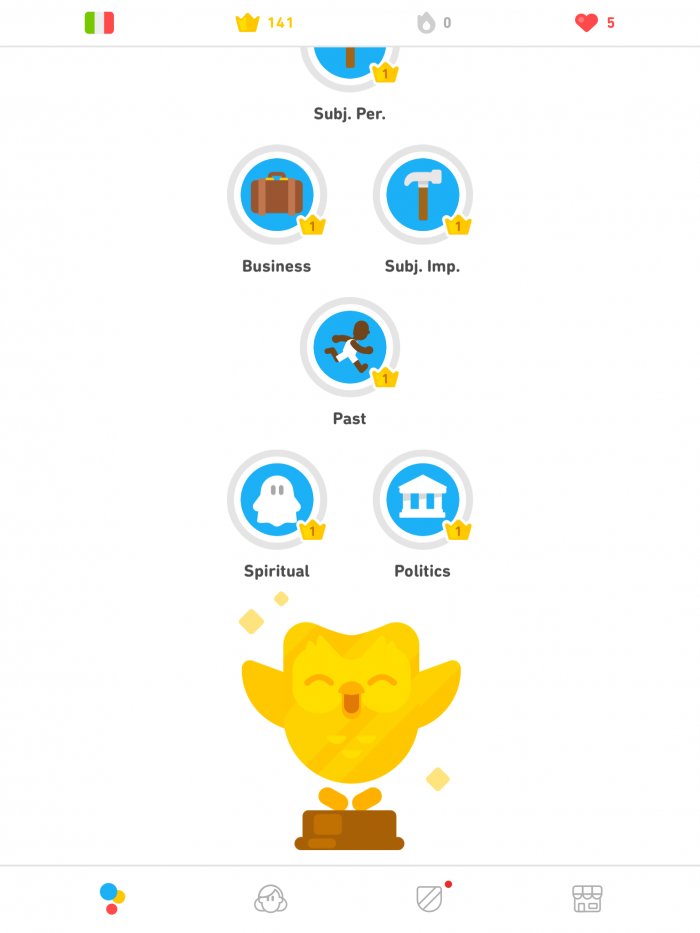
Learning on
Learning aids
Also, at the bottom of the page, you will have a reference to the forum discussions where the word may have been used.
Finally, you will have the opportunity to participate in the
Learn while having fun
Sound recognition exercise:
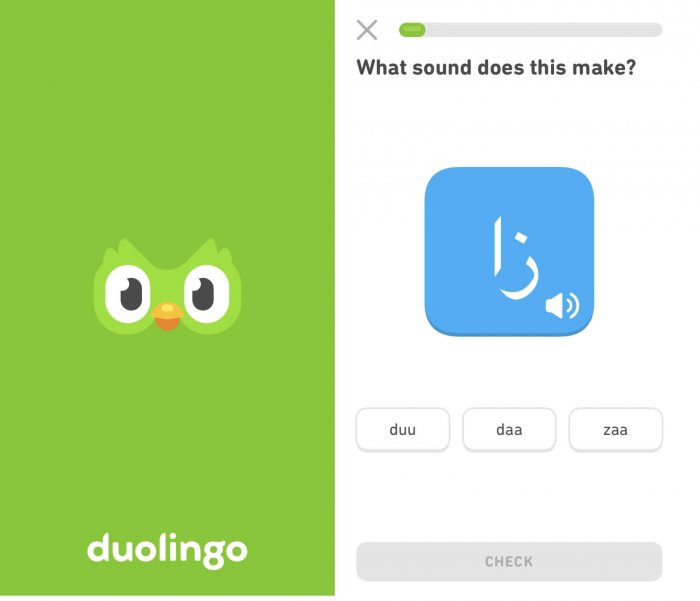
Translation exercise:
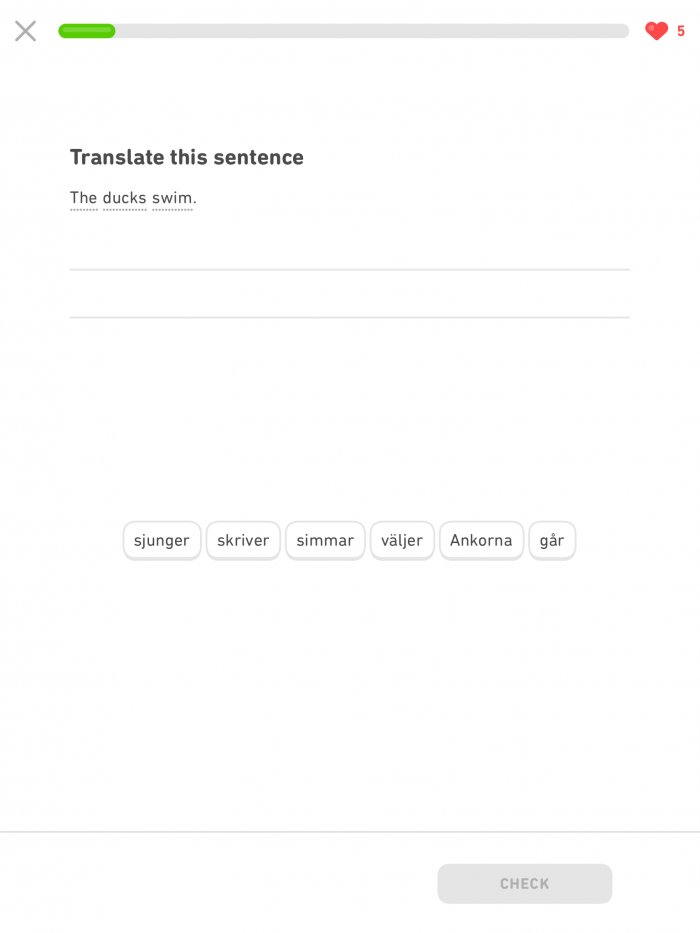
1. The lessons make you work on the language in its written and oral aspect. Because in addition to translating words or sentences, you will also have to transcribe listened sentences or repeat certain sentences. The exercises are thus quite varied but they do not reach the excellence of the paid application Mosalingua, for example.
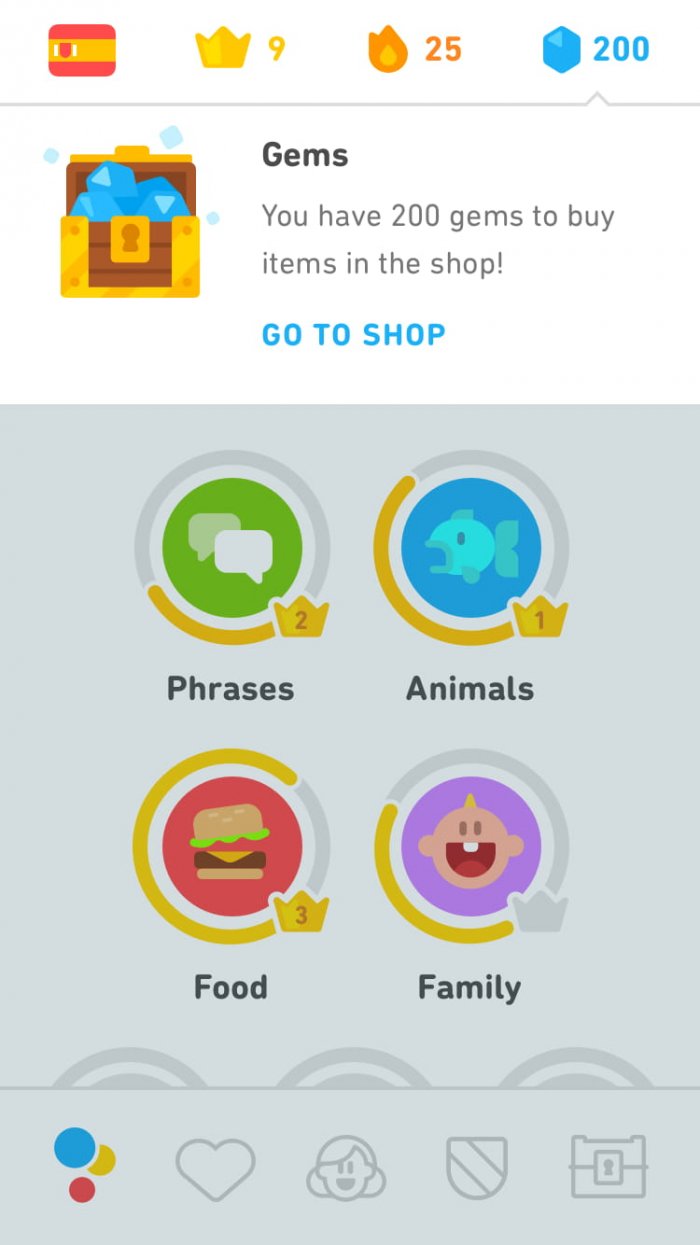
With your gems you can buy:
➡ boosters to help you finish your series:
– life recharges to be entitled to a greater margin of error during the lessons, and not to have to switch to the premium version (where your lives are unlimited)
– streak freeze to keep a streak of workouts (uninterrupted learning) even if there is a day when you cannot log into
– quits or doubles: bet 5 lingots and win 10 if you succeed in making a series of 7 days
– timed workout to train for a set time on previously worked units
➡ bonus units: for example you will offer yourself the lesson to flirt in English, or even Spanish expressions and proverbs
➡ outfits to personalize your “Duo” owl.
So why does Duolingo attract so many users?
Because if you weigh the pros and cons, a lot of people find themselves there, at least for a while. Here is our recap of the major pros and cons of
Conclusion: The best free language learning app!
How to start using Duolingo
If you use our affiliate link below to purchase or subscribe to
Start using
- vincent
 January 2022
January 2022
Reviews
 | alex_in_viennaDecember 2023 I have used Duo for ~5 yrs now. I learned Hebew to the level I’m pretty conversant (and took it to live meetings with a language partner I met here, on Polyglot). Now studying Italian, and looking to do the same once I reach a certain proficiency level |
 English
English | 3ND3RM4NFebruary 2023 It is helpful however it does repeat a lot. Also, some sentences are straight-up weird 😭. I would recommend using it but maybe not as a primary source/app. |
 English
English | AntukaMay 2022 Duolingo is very helpful. I use Duolingo for four years. |
 English
English | SwissalpSFebruary 2022 Free users have the same amount of lessons as those who pay. Paying mainly removes the third party advertisments. It also allows users to jump around the tree more freely i.e. skip parts. Furthermore the paid version has some more features to repeat the lessons where you made mistakes. Which you can do manually too. There is no ’real’ reason to get the pro version, the content is the same. If you want to learn quickly, use this to augment your personalized lessons you take with an in-person teacher. The best part IMO are the stories. Now these are not available for all language courses and each course has it’s own quality. Naturally the most used courses are those that work the smoothest and accept most variations. e.g. en->es, fr->es, es->fr are really well worked out compared to the hebrew and hindi courses. |
 English
English
vincentFebruary 2022 Thanks for your feed-back about Duolingo
 | vincentJanuary 2022 It’s like learning while playing, that’s why it’s working so well  |
 English
EnglishOther tools
-
Busuu Review: Is it worth the investment for language learners?2 ReviewsLearn:mulMobile App
-
Tandem Language Exchange Tool Review: Find Your Language Partner Today1 ReviewsLearn:mulMobile App -
Verbling Review: Language Learning Made Easy1 ReviewsLearn:mulWebsite -
Flashcubes App0 ReviewsLearn:mulMobile App
-
Workrave Review: Boost Your Productivity and Prevent Repetitive Strain Injury4 ReviewsLearn:mulSoftware -
Rocket Languages Review2 ReviewsLearn:mulWebsite -
Mondly Review5 ReviewsLearn:mulMobile App -
Review4 ReviewsLearn:mulWebsite
-
Grammar-monster Review: Improve Your Grammar Skills with Ease1 ReviewsLearn:mulWebsite -
Fluent in 3 Months Review: Is It Worth Your Time and Money?1 ReviewsLearn:mulBook













































